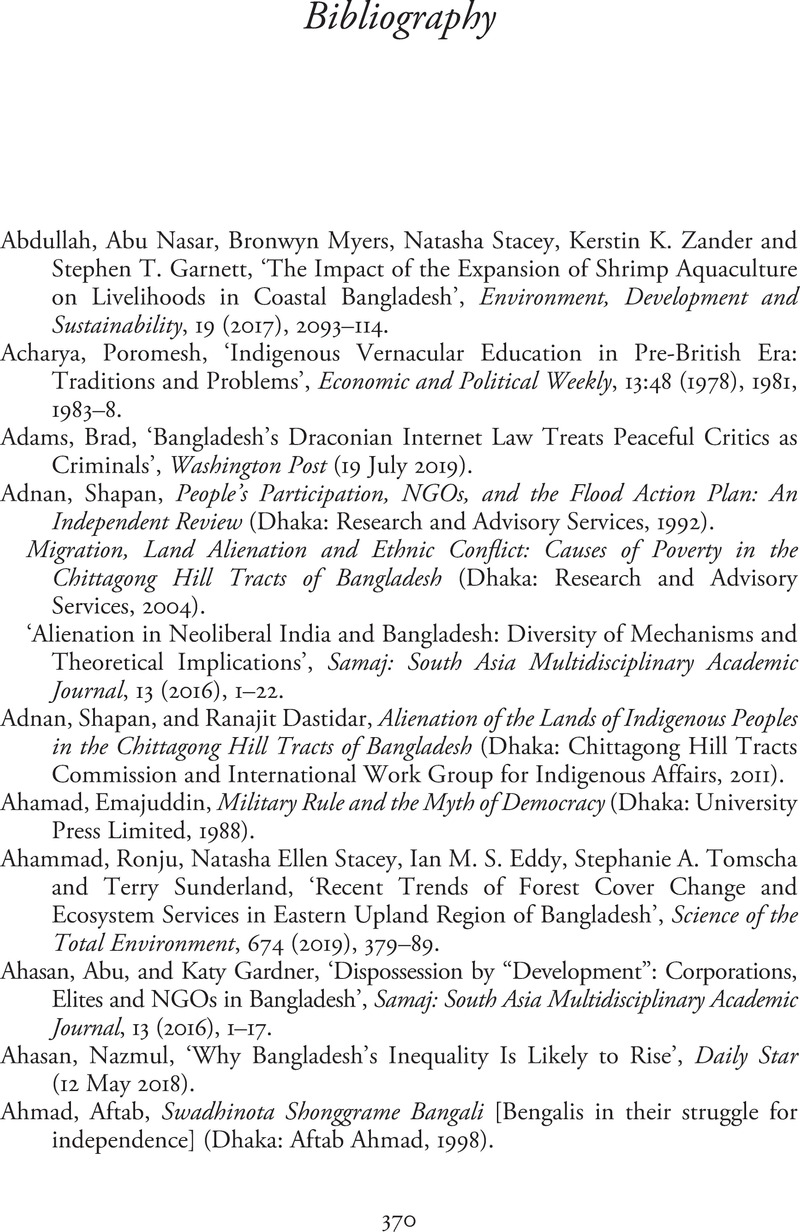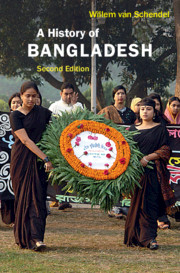Book contents
- A History of Bangladesh
- A History of Bangladesh
- Copyright page
- Contents
- Plates
- Maps and Figures
- Preface to Second Edition
- Acknowledgements
- Timeline
- Introduction
- Part I The Long View
- Part II Colonial Encounters
- Part III Becoming East Pakistan
- Part IV War and the Birth of Bangladesh
- Part V Independent Bangladesh
- Conclusion
- Bangladesh District Maps
- Key Political Figures since 1947
- Glossary of Bengali Terms
- Notes
- Bibliography
- Index
- References
Bibliography
Published online by Cambridge University Press: 17 June 2021
- A History of Bangladesh
- A History of Bangladesh
- Copyright page
- Contents
- Plates
- Maps and Figures
- Preface to Second Edition
- Acknowledgements
- Timeline
- Introduction
- Part I The Long View
- Part II Colonial Encounters
- Part III Becoming East Pakistan
- Part IV War and the Birth of Bangladesh
- Part V Independent Bangladesh
- Conclusion
- Bangladesh District Maps
- Key Political Figures since 1947
- Glossary of Bengali Terms
- Notes
- Bibliography
- Index
- References
Summary

- Type
- Chapter
- Information
- A History of Bangladesh , pp. 370 - 414Publisher: Cambridge University PressPrint publication year: 2020
References
Bibliography
Asian Century: The Rise and Fall of Mujib, directed by Shehzad Hameed Ahmad (2017).
Deshantori [The Migrant], directed by Sujan Mahmud and Mridul Chowdhury (2006).
Eclipse, directed by Shaheen Akhter and Shameem Akhtar (1994).
Every Good Marriage Begins With Tears, directed by Simon Chambers (2006).
Ghare-Baire [Home and the World], directed by Satyajit Ray (1984).
Hazaribagh: Toxic Leather, directed by Eric de la Varène and Elise Darblay (2013).
Iron Crows, directed by Bong-Nam Park (2009).
Licu’s Holidays/Le Ferie di Licu, directed by Vittorio Moroni (2007).
A Life Suspended, directed by Kazuyo Minamide (2013).
Lohakhor [Iron Eaters], directed by Shaheen Dil-Riaz (2007).
Muktir Gan [Song of Freedom] (1995) and Muktir Kotha [Words of Freedom] (1998), directed by Tareque and Catherine Masud.
Okul Nodi [Endless River], directed by Tuni Chatterji (2012).
The Young Man Was (four parts), directed by Naeem Mohaiemen (2011–2016).

